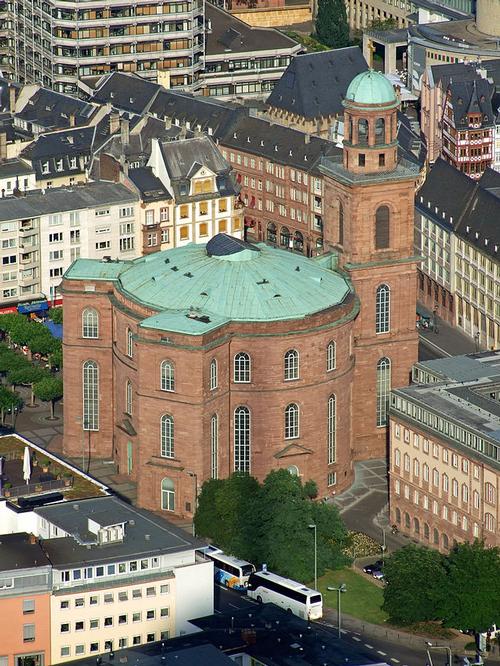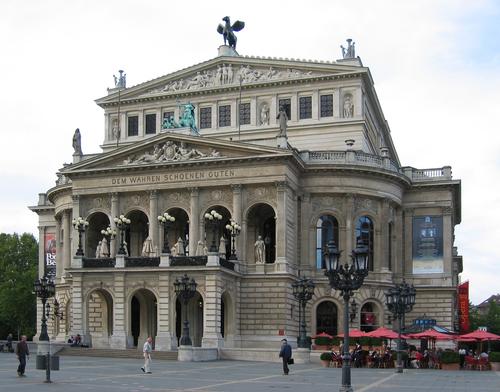GERMANY
Frankfurt

Frankfurt
Frankfurt
Frankfurt is one of the largest cities in Germany. The city is known as Frankfurt, although its full name is Frankfurt am Main. The city has been Germany's largest financial center for centuries and is home to a number of major banks and insurance brokers. The three pillars of Frankfurt's economy are finance, transport and stock exchanges (Frankfurter Messe). The Frankfurt stock exchange is by far the largest in Germany and one of the most important in the world. Frankfurt is also the seat of the European Central Bank, which shapes monetary policy for the Euro zone and of the German Central Bank.
 Frankfurt skylinePhoto:Epizentrum CC 3.0 Unported no changes made
Frankfurt skylinePhoto:Epizentrum CC 3.0 Unported no changes made
Location
Frankfurt is a city in the German state of Hesse. The city lies on both sides of the River Main in the southwestern part of Germany. The southern part of the city contains the Frankfurter Stadtwald, Germany's largest forest within a city. The center of Frankfurt is on the north side of the river. The oldest part is the Altstadt, which with an area of 0.48 km² is also the smallest part of the city. In a semicircle around the Altstadt is the Innenstadt, where the most famous buildings are.
Weather
Frankfurt has a moderate climate with warm wet summers, fairly mild winters and rainfall all year round. Compared to the UK, it is on average a bit warmer in the summer and slightly colder in the winter months. The summer months have an average temperature of 22 °C. However, there are peaks with high temperatures of over 30 °C. The winter season lasts from November to February. The temperatures are then around zero degrees Celsius. Because the temperature regularly dips below zero in winter, there is a fairly high chance of snow. The best time to visit Frankfurt is from May to the end of October. July is the sunniest month (220 hours of sunshine).
History
The Romans had settlements and army camps in the area of present-day Frankfurt. Frankfurt was one of the most important cities in the Holy Roman Empire. From 855 on, the German rulers were elected in Frankfurt and crowned in Aachen. Since 1562 the kings and emperors were also crowned in Frankfurt, Maximilian II was the first.
 Frankfurt Map from 1770Photo:Public Domain
Frankfurt Map from 1770Photo:Public Domain
The city of Frankfurt was heavily bombed in the Second World War. About 5,500 residents were killed in the bombing and the once famous medieval city center was destroyed. Post-war reconstruction took place in a modern style. This changed the architectural face of Frankfurt. Few historic buildings have been restored. In the post-war period, the city developed into a business metropolis with a skyline of skyscrapers. In 1998 Frankfurt became the seat of the European Central Bank.
Sights
 Frankfurt MessePhoto: Dontworry CC 3.0 Unported no changes made
Frankfurt MessePhoto: Dontworry CC 3.0 Unported no changes made
The Frankfurter Messe is one of the largest exhibition centers in the world. About 40-50 fairs are held annually and attract a great many visitors.
St. Bartholomew's Cathedral (Dom Sankt Bartholomaeus) is a Gothic building built in the 14th and 15th centuries on the foundation of an earlier church from the Merovingian era. It is Frankfurt's main church. The tower can be climbed in the summer season.
 Frankfurt PaulskirchePhoto: Dontworry CC 3.0 Unported no changes made
Frankfurt PaulskirchePhoto: Dontworry CC 3.0 Unported no changes made
The Paulskirche is a National Historic Landmark in Germany with great political symbolism, as it was the seat of the first democratically elected parliament in 1848. The Paulskirche was built in 1789 as a Protestant church. The great importance of the church is that it was home to the Frankfurt Parliament. That parliament tried to write a constitution for a united Germany during the revolutionary years 1848-1849. The attempt failed because the princes of Prussia and Austria did not want to lose power. In 1849, the Prussian troops ended the democratic experiment with force of arms and the parliament was dissolved. After that, the building was used again for church services. The Paulskirche was partially destroyed in the Second World War, and the interior of the building was particularly affected by the war. The church was rebuilt quickly and symbolically after the war and is today not used for religious services, but mainly for exhibitions and events.
 Frankfurt Alte OperPhoto: Aj82 CC 2.0 Unported no changes made
Frankfurt Alte OperPhoto: Aj82 CC 2.0 Unported no changes made
The famous old opera house (Alte Oper) was built in 1880 by the architect Richard Lucae. It was one of the great opera houses in Germany until it was badly damaged in World War II. Until the 1970s it was a ruin. It was even thought of simply blowing up the remains. Due to pressure from the residents, the building was finally completely renovated and reopened in 1981. Today it functions as a concert hall, operas are performed at the Oper Frankfurt.
Johann Wolfgang von Goethe was born in Frankfurt in 1749. Goethe's birthplace is located on the Grosser Hirschgraben and the house has been converted into a museum. Goethe's office can be seen on the top floor of the Goethe house. The Goethe Museum has paintings and sculptures from Goethe's time.
 Frankfurt StadelPhoto: Simsalabimbam CC 3.0 Unported no changes made
Frankfurt StadelPhoto: Simsalabimbam CC 3.0 Unported no changes made
The "Stadel" is home to a first-class collection of artworks featuring pieces by famous artists such as Vermeer, Rembrandt, Renoir and Boticelli. German artists is a focus of this remarkable Stadel Art Museum, but there is a good balance in the collection.
The Museum of Modern Art (MMK) has been part of cultural life in Frankfurt since the early 1980s. The museum is popularly known as the 'Tortenstück', due to its triangular shape. The building was designed by Austrian architect Hans Hollein and is home to a collection of modern artworks by European and American artists such as Andy Warhol, Roy Lichtenstein, Donald Judd, Reiner Ruthenbeck and Claes Oldenburg.
Tips
The Zeil is Frankfurt's main shopping street. The street is a pedestrian zone and is bordered by two large squares, Hauptwache to the west and Konstablerwache to the east. It is the second most expensive shopping street in Germany after Kaufingerstrasse in Munich. In the month before Christmas, the Zeil is the site for one of the largest and oldest Christmas markets in Germany.
Useful links Frankfurt
BBC Country ProfilesWorld Fact Book Explore all Countries
How to call
Last updated December 2025
Copyright: Team - The World of Info